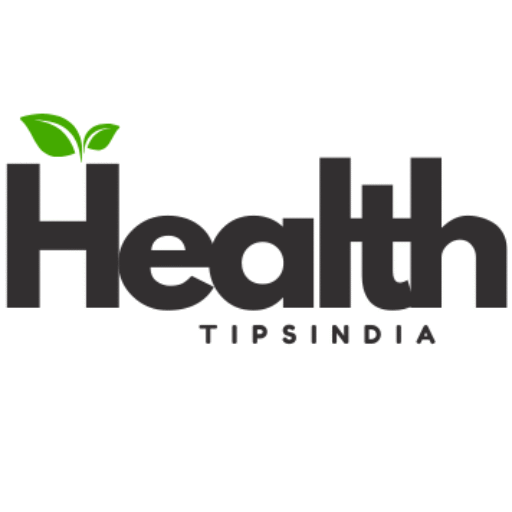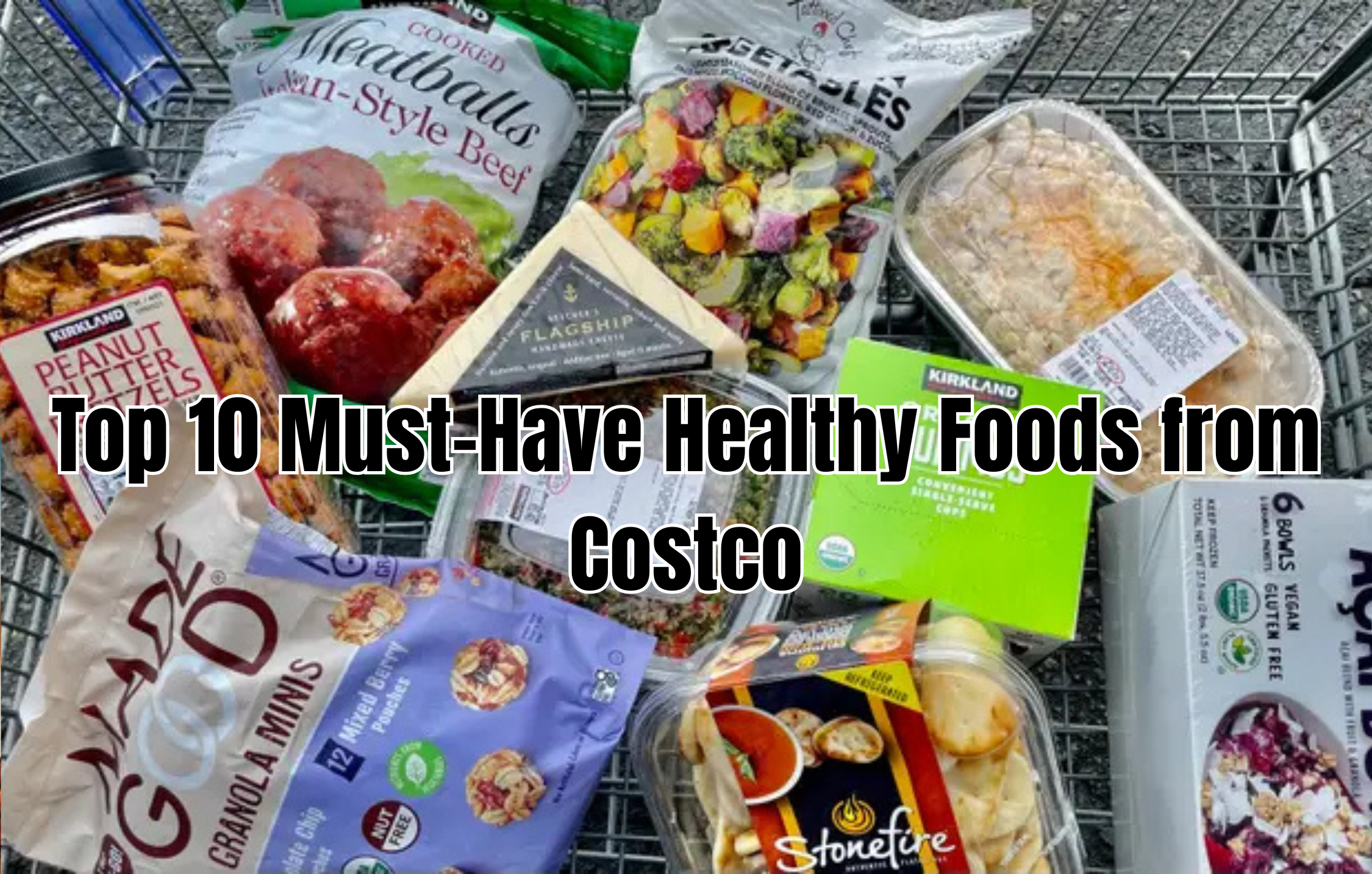1. Frozen Organic Berries
One of the exceptional options: frozen natural combined berries (blueberries, raspberries, and strawberries) in bulk packs.
Why they are high-quality:
- They are full of antioxidants, fiber, nutrients C and K, and not lots of delivered sugar.
- The benefit of being frozen is that you can purchase in bulk and that they may not go horrific quickly.
How to use:
- Mix into smoothies.
- Blend with plain yogurt or oatmeal.
- Top pancakes or whole-grain cereal with it.
Notes:
- Packs might contain extra sugar or other fruits—read ingredients.
- Packs are extremely huge, so control portions and store accordingly.
2. Organic Quinoa (Kirkland or similar)
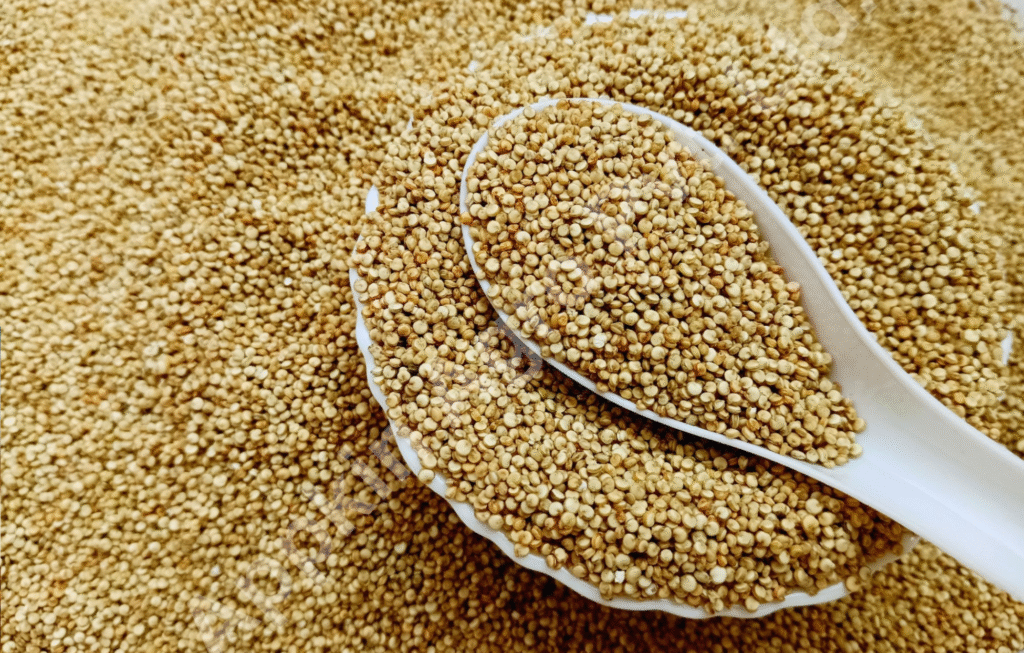
An ancient grain, a hit.
Why It’s Good:
- Gluten-free, more protein than usual white rice, and gives fiber and essential amino acids.
- Organic is a good choice and might have a better price because it comes in bulk.
How to Use:
- Prepare quinoa and serve as a base for salads, bowls, or stir-fries.
- Pair it with vegetables and beans to make a healthy vegan dish.
Notes:
- Make certain to put together dinner well (rinse and cook dinner for the proper quantity of time) for the awesome texture.
- Healthy grains eaten in isolation aren’t sufficient—pair them with vegetables and protein.
3.Wild-Caught Salmon/Frozen Fish Fillets
Seafood that features on the “healthy staples” list.
Why It’s Good:
- Wild-caught salmon consists of high-quality protein and omega-three fatty acids (exact for coronary heart and mind health).
- Frozen fillets make them convenient to buy in bulk.
How to Use:
- Grill or bake a fillet and eat with vegetables and quinoa or brown rice.
- Add to salads, whole-grain bread sandwiches, or pasta.
Note:
- Occasionally there have been recalls on cut products—for instance, smoked salmon.
- Defrost carefully when taking out of the freezer, and take care with storage.
4.Almond Butter (or Pure Nut Butter)
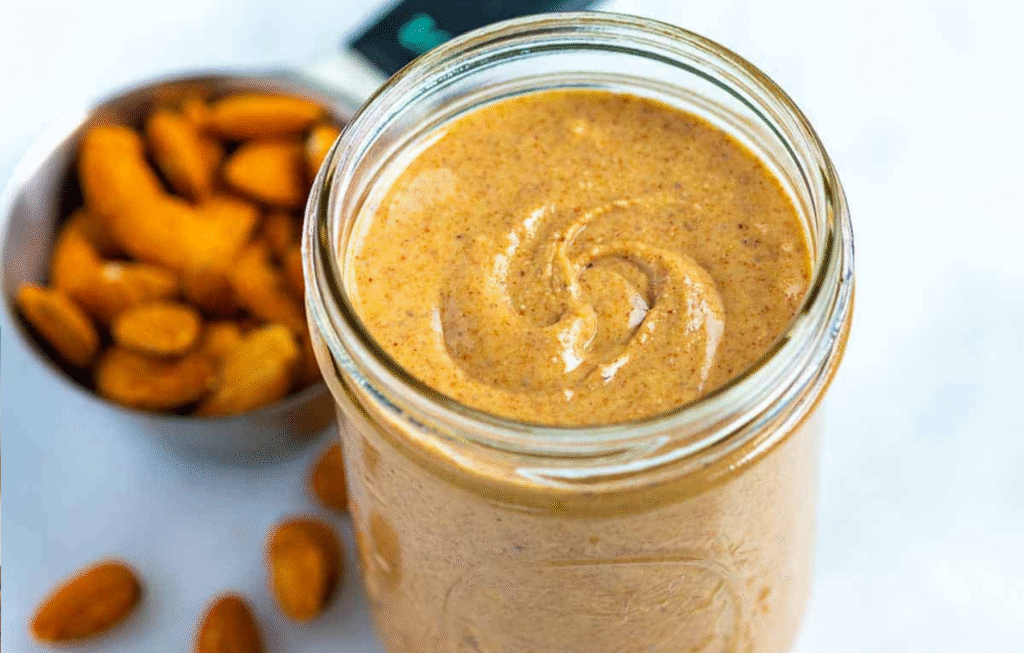
Nut butter tends to be a “treat,” but if selected well, it can be very good for you.
Why It’s Good:
- Source of healthy monounsaturated fats, vitamin E, some fiber, and protein.
- Serves as a spread or snack food that will satisfy.
How to Use:
- Spread 1 tablespoon on whole-grain toast topped with a banana slice.
- Mix into oatmeal or a smoothie.
- Use as a dip with apple slices or celery stalks.
Things to Keep in Mind:
- Quantity Matters: Nut butters are calorie-dense (usually 200+ calories in 2 tbsp).
- Read the label—select those with no added sugar or unnecessary oils.
5.Lightly Peeled Hemp Hearts/Seed & Nut Mix
Seeds and nuts are wholesome—as an instance, hemp hearts (peeled hemp seeds) are protected in a dietary notion.
Why It’s Good:
- Healthy fats (poly and mono), a few plant protein, fiber, and micronutrients which includes magnesium.
- Convenient to sprinkle on food and give an extra boost of nutrients.
How to Use:
- Sprinkle on yogurt, overnight oats, salads, or grain bowls.
- Have mixed nuts/seeds as a snack afterwards.
Things to Remember:
- Once more, calorie density is high: a handful will do.
- Flavored or salted types can be high in sodium or sugar—read the label.
6.Unsweetened Plain Greek Yogurt
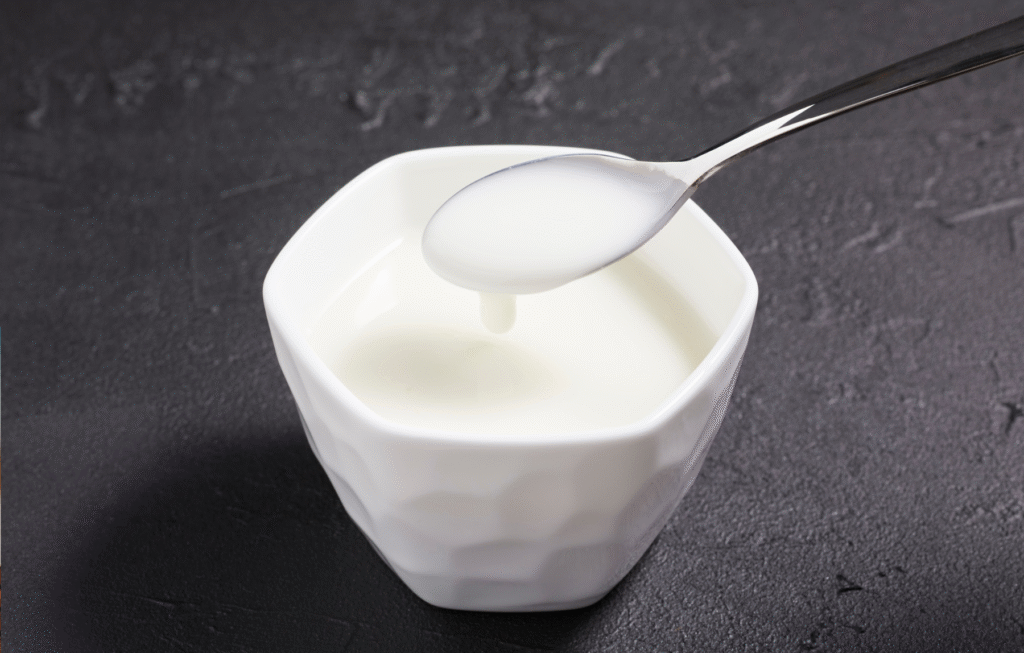
- A nutritious dairy substitute.
Why It’s Good:
- Very excessive in protein (which assists with satiety and muscle restore) and has probiotics (for a wholesome intestine).
- If unsweetened, added sugar can be unnoticed.
How to use:
- 1 cup plain Greek yogurt + berries + seeds = a healthy breakfast or snack.
- Substitute it for sour cream.
Notes:
- Some flavored yogurts are loaded with sugar—read the label.
- If you are lactose sensitive, use low-lactose or plant-based yogurt.
7. Extra Virgin Olive Oil
A staple in the pantry for healthy dressings and cooking.
Why it’s good:
- Olive oil (particularly extra virgin) is wealthy in monounsaturated fats and polyphenols, which might be beneficial for heart health.
- Using it in area of different saturated oils improves weight loss plan fine.
How to use:
- Add a few drops to roasted vegetables.
- Use as a finishing touch to homemade vinaigrettes or salads and grain bowls.
Notes:
- This is also a fat, so pay attention to the amount (1–2 tablespoons per serving is typical).
- Ensure the bottle is really “extra virgin” and not a blend oil.
8. Organic Hummus / Chickpea-Based Snacks
A plant-based snack or spread alternative for use instead of peanut chips.
Why It’s Good:
- Chickpeas contain on the whole plant-based totally protein and fiber, and hummus consists of healthful fat (from olive oil or tahini) and flavor.
- A healthier snack than chips or heavy dips.
How to Use:
- Serve hummus as a dip with baby carrots, cucumber slices, or whole-grain pita.
- Substitute hummus for heavy sauces on wraps or sandwiches.
Things to Remember:
- Some versions may have added oils or ingredients—opt for those with minimal labels.
- High amounts can add calories—regulate portions.
9. Unsalted Pistachios or Mixed Nuts
A snack providing crisps that many dietitians would recommend.
Why Good:
- Nuts like pistachios provide a balance of protein, fiber, healthy fats, and micronutrients (potassium, magnesium).
- The act of shelling nuts helps them be eaten slowly, increasing satiety.
How to Use:
- Keep a bag of small pistachios to keep in the office or car.
- Add chopped nuts to oatmeal, yogurt, or salads—for both crunch and nutrition.
Things to Keep in Mind:
- Salted sorts boom sodium—it is exceptional to opt for unsalted ones.
- Bulk baggage are huge—cut into portions to save you extra consumption.
10. Prunes or Dried Fruit with No Added Sugar
Less trendy but a good choice.
Why Good:
- Prunes provide fiber and natural sweetness and may be good for digestion and bones.
- They’re convenient and shelf-stable.
How to Use:
- Eat a small serving of ~4-6 prunes as a snack.
- Chop and add to oatmeal or trail mix.
Notes:
- Even so-called “natural” dried fruit can be high-calorie—watch the serving size.
- Some dried fruits contain added sugars or sulfites—check the label.
How to Use It All Wisely—Smart Shopping and Usage Tips
- Plan Your Shopping. Since Costco sells in bulk packs, it’s a good idea to carefully consider how you’ll use and store them.
- It’s all about quantity. Although the bag is big, you are not going to eat blindly—package them in small portions.
- It’s balanced eating. Only “healthy” foods from the pantry are not sufficient—raw vegetables, lean proteins, grains, and an appropriate mix of food are important too.
- Read the labels. Even so-called “healthy” foods can have sugar, salt, or processed food ingredients—take a close read.
- Mix it up. Add frozen berries, quinoa, salmon, hummus, nuts… to avoid boredom in your diet.
- Modify to your requirements. Vegetarian? Quinoa, hummus, nuts, and yogurt are the way to go. Non-vegetarian? Add salmon, chicken, and eggs.
- Think about garage and freshness. Bulk foods along with nuts and seeds turn bad quick—keep them in a dark, cool, or sealed field, or refrigerator/freezer if essential.
Final Thoughts
Eating wholesome at Costco isn’t such a terrible concept for the ones interested in that—truly, it is able to be clean and cost-effective. With the 10 items listed above, you can stock your pantry and refrigerator with those that are nutritionally useful whilst enjoying the blessings of bulk purchases.
These food, in idea, offer both fiber and vitamins: berries’ antioxidants, omega-three fatty acids from fish, whole grains’ and seeds’ fiber, nut butters’ and olive oil’s healthy fats, and hummus’ and nuts’ nutritious snacks.
Next time you are at Costco, function those in your list—as a minimum, a pair of pantry elements (which incorporates quinoa and olive oil), multiple protein food (salmon and yogurt), some snacks (nuts and hummus), and hundreds of produce (frozen berries or glowing vegetables).
With correct picks, your Costco day trip can be one small step within the route of greater wholesome consuming.
FAQs
What are the best frozen fruits to purchase at Costco?
Frozen organic mixed berries are an excellent choice—teeming with antioxidants, fiber, and vitamins. They’re easy to use, spoil-proof, and ideal for smoothies, oatmeal, or yogurt.
Why is Costco’s organic quinoa a good pantry staple?
Quinoa is protein-dense, gluten-free, and rich in all nine of the essential amino acids. Purchasing it in bulk provides value and versatility for salads, bowls, or stir-fries.
Is Costco’s wild-caught salmon worth purchasing?
Yes. It’s a high-quality protein packed with omega-3s for brain and heart health. Frozen fillets provide shelf life and convenience.
Hi, I’m veda, a professional health content writer and passionate wellness advocate at HealthTipsIndia.com
. With years of experience in writing evidence-based, reader-friendly articles, I specialize in creating content that empowers people to live healthier, more balanced lives. Whether it’s nutrition, fitness, natural remedies, or preventive healthcare, I translate complex medical concepts into actionable tips tailored for the Indian lifestyle. My goal? To make trustworthy health information accessible to everyone—one article at a time.
